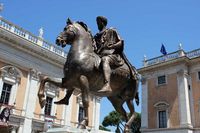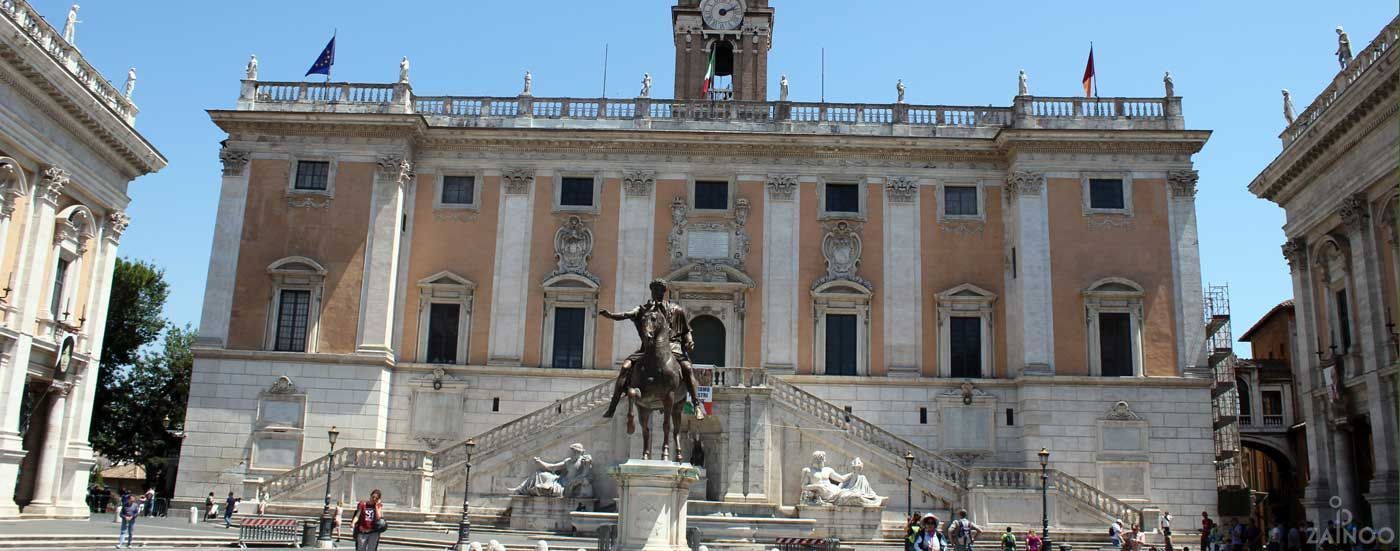Capitol
Square
Capitol and Piazza del Campidoglio
The political and religious centre of ancient Rome
The Capitol is the smallest of the Seven Hills of Rome, but at the same time the political and religious centre of ancient Rome. The two main temples of ancient Rome, the temple of Juno and the Temple of Jupiter Optimus Maximus Capitolinus, were situated here. Today, the beautifully designed square by Michelangelo is surrounded by the Senatorial Palace, the Curator Palace and the New Palace. The latter two house the Capitoline Museums.
Piazza del Campidoglio - the Capitol Square
From the Via di Teatro di Marcello a mighty ramp leads up to the Capitol Square. It was designed by the architect Michelangelo and completed by Giacomo della Porta in 1581. The flanking statues represent the tribune Cola di Rienzi, the Dioscuri Castor and Pollux, and the emperors Constantine and Constantine II. The trapezoidal Capitol Square itself was also designed by Michelangelo and is surrounded by three palaces. The focal point in the centre of the square is the equestrian statue of Marcus Aurelius in gilded bronze. Only the copy can be seen in the square itself - the original is located in the adjacent Capitoline Museums. Originally, people thought that the statue represented the Emperor Constantine, the Emperor who tolerated Christianity. The popes spared the equestrian statue from melting down and placed it in front of the church of St. John Lateran. Only in the 16th Century, when they realized the true identity of the rider by comparing coins, was the statue brought to the Capitol square. The statue was used as a model for the equestrian statues of the Renaissance.
Palazzo dei Senatori - the Senatorial Palace
The powerful Senatorial Palace was built in 1605 by the architects Giacomo della Porta, Girolamo Rainaldi and Michelangelo. The impressive bell tower was created by Martino Longhi. The fountain in front of the double staircase is adorned by the goddess Minerva and the personification of the rivers Tiber and Nile. Today, the Senatorial Palace is the seat of the Roman mayor and city council and can therefore not be visited. Somewhat hidden in the left corner you should definitely take a look at the famous Capitoline Wolf. Here is a copy of the bronze statue of the female wolf, suckling the twins Romulus and Remus. The original is on display in the adjacent Capitoline Museums.










Tweet